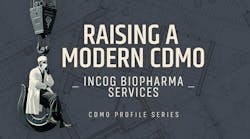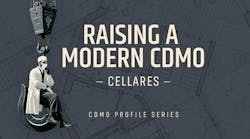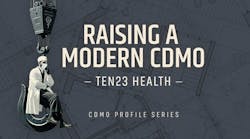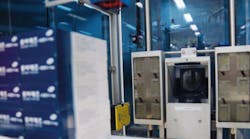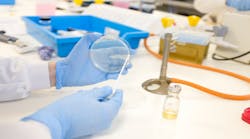For safety and compliance reasons, drug manufacturers need to know how resilient their gelcaps, how crumbly their tablets, or how sticky their creams are. The only way to be sure is to perform textural analysis, and to develop reliable, consistent methods for doing so.
Textural analysis is the domain of Misti Toro, head of Toro Texture and Consulting (Glendale, Calif.). Depending on the project, Toro works with product developers, process engineers, raw materials specialists, and quality control teams to ensure the feel of a product from development through commercial manufacturing.
We talked with Toro about the kinds of challenges she faces every day.
PhM: Textural issues would seem to be most relevant during early development, but are there late-stage and commercial manufacturing issues you deal with as well?
M.T.: Textural analysis can be performed at any stage. Many companies do set specifications early in the R&D process. This information may be used later to identify a problem in the process or to ensure consistency of the “feel” of the product from batch to batch. I have had companies correlate texture and hardness results to moisture levels to use as an indicator for out of spec moisture levels. The results can be gained much faster than running some of the approved moisture methods.
I have also used this technology to determine if materials from different suppliers give the same feel to the product. Many people are very sensitive to minor changes in the texture of products which may be placed in the mouth. Companies have learned that customers do expect a consistent product, and are using textural analysis as another indicator for ensuring a consistent product.
PhM: What services do you perform along the lines of safety and risk management, to support QA/QC and QbD efforts?
M.T.: Texture Analysis can be used to support all of these functions. Along the lines of safety and risk management, the hardness of a product may be used to ensure a chewable product will break when chewed instead of breaking a tooth. Another company may wish to ensure their product can be pushed out of a syringe under the normal forces a hand can exert. The next company may need to ensure a gel cap cannot be broken when squeezed between the fingers. Many companies want to test only the raw materials to ensure their vendors are meeting the specifications required for their processes—for example, bloom strength for gelatins. It really depends on any claims or concerns each team has about the products they produce. One method may be used to support safety and risk management, QA/QA and QbD. The trick is to develop the right method and set a realistic specification, one within the range which your process can realistically hit day to day if you have the proper control of your process.
PhM: What are the challenges of method development, and could you offer up a few pieces of advice?
M.T.: The biggest challenge in method development is fully defining the expectations of the method. Today there are so many resources at our fingertips for method development, so no one should really ever need to start completely from scratch. From experience, I have learned that the fast-paced manufacturing environment does not always allow for the time required to fully investigate all of one’s options. I have noticed more and more groups changing more than one thing at a time on the methods as they go through the method development process to try to speed things up. How do you know which change solved your problem? It is important to remember to slow down and fully investigate the options available to you to ensure the most reliable and most cost effective method has been developed. It may require more time to develop a method this way, but it will save many hours of troubleshooting, and in the manufacturing world, time is money.
PhM: Some of your work relates to patent issues. Why? Might some manufacturers be unknowingly infringing upon texture-related patents?
M.T.: A manufacturer very well may be infringing upon a patent. Currently, there are in excess of 500 patents written around texture across all manufacturing industries. The work we do around patents involves actually testing the products against the patents to determine whether or not there is any patent infringement. I also do the texture analysis work for companies who wish to include texture in their patents. It is the laboratory analysis aspect that is used to support a patent, or determine if a patent is broken.
PhM: What’s the extent of the analytical work that you do?
M.T.: At this time, besides textural analysis, I also perform other routine testing that may support any work that would need to be done to support a project based around texture analysis, such as moisture, pH, and viscosity. I hope to grow with time.
Previously, I managed a laboratory for a major food company. I use the knowledge I gained here to work with other companies that must comply with the many laws of the FDA. Currently, I have a large network of contractual analytical laboratories which can perform any testing which may need to be performed to support a project. Presently, I am consulting with smaller companies who do not have the physical resources (equipment or personnel to perform testing) or the laboratory experience they need to ensure the requirements of the different agencies are met. Several companies I consult with have their own labs that may perform the work, but may need help with the design of a particular sampling or testing plan to ensure safety.
PhM: Who are the “texture experts” in most pharma companies—who do you usually consult with and what’s the benefit to them of outsourcing some of their work?
M.T.: To date, I have worked with the product developers, process engineers, raw materials specialists/vendor assurance, and the quality control teams.
The product developers may need to set specifications on the products they are developing. They may need to ensure that a chewable tablet is soft enough to chew, or the packing will stand up to the pressures that may be exerted on it. Depending on the product and the product claims they wish to meet, there could be a multitude of tests that could be performed to ensure the claims are met.
The process engineers want to ensure consistency of the processes they have defined for manufacturing. Many of my clients want to ensure a change they need to make to the process will not change the “feel” of the final product.
The vendor assurance teams may use texture analysis to ensure the specifications or claims of their suppliers are met, especially in things such as gelatins which are sold according to bloom strength.
The quality control teams may utilize texture as an additional method to define the quality of their products. One test can help to determine if the entire process works. Texture should not be used alone for quality in pharmaceuticals, but it can be used as an added source of information. Many of the companies who hire me do not have the resources to perform the testing in house. More and more companies are cutting their work forces, but the work still needs to be performed. It becomes more cost effective to outsource the job than it does to purchase the equipment and hire the staff to perform the testing in house.
